Daniel Löwenbrück and Leif Elggren
Performance at Extreme Rituals Festival, Bristol, UK, November 30, 2012
"There was always going to be an element of confusion, and unknown quantities, given the name of the festival - Extreme Rituals - and the opening act of the evening programme had already taken a sideswipe at audience expectations in an rather fittingly unexpected way. Phurpa - named after a Himalayan buddhist ritual dagger used to pin down demons - ceremonially-robed and barely-lit had, after 30 minutes of gutteral throat chanting, just revealed themselved to be not shaven-headed and deeply-tanned Tibetan monks but rather pale white Russians with quirky haircuts.
Shortly afterwards Daniel Löwenbrück and Leif Elggren took to the stage and contributed to the general bewilderment with a series of seemingly unconnected (at least at first) events...
In front of a spotlit brown leather armchair the two performers, having removed their jackets, standing a foot apart from and facing each other proceeded to loosely bind themselves together by sewing two lengths of thread through their own and each others shirt. Pulling apart from each other and ripping the threads they then left the stage to reappear amongst the watching audience in the auditorium.
Parting the front from the rear of the audience a large wide roll of white paper was unfurled cross the full width of the floor, upon which was then dragged a violin to which two black marker pens had been attached (bringing to mind 'Un chien andalou' oddly enough), drawing two parallel lines across the length of the paper. During this act Elggren had started to read aloud the writing from a sheet of paper, and after the lines had been drawn both performers reurned once again to the beginning of the paper sprawl and, taking a marker pen, Löwenbrück began to transcribe upon the paper the recitation of the monologue.
Due partly to Elggren's thick accent (the monologue being read in English), but mainly due to the sheer uncertainty as to the meaning of the events occuring it wasn't always clear to follow the content of the monologue, and there seemed to be a noticeable amount of irritation on the part of both performers, Elggren for having to repeat the lines over and over in order for Löwenbrück to keep up with the transcription, and on Löwenbrück's part for having to do the transcription itself. One line which I do clearly remember is of that 'little idiot telling truths' repeated often which made me feel very guilty for a number of reasons.
Once the transcription was complete both performers took to the stage once again, Elggren continuing the monolgue which was now coming into clearer focus - a pointed and scathing indictment of human behaviour, in particular the stupidity and hypocrisy that as a species we allow ourselves to wallow in, and use to avoid responsibility, or to even feel any sense of compassion for our fellow beings - Elggren writhing in discomfort as he spoke aloud the words.
During this Löwenbrück had been carefully arranging a circle of empty bottles around the margin of the spotlit armchair which Elggren had been standing to the side of. At the end of the monologue Elggren retired to sit in the armchair, Löwenbrück producing another bottle - this one full of milk - and proceeded to pour the contents into one of the empty bottles in the circle, some of the milk inevitably spilling over the side as it was poured. At this point a narrative began to suggest itself.
Taking the newly-filled bottle Löwenbrück then repeated the previous action with the empty bottle to the left - again some milk spilling as it was poured - and repeated this, continuing the action clockwise around the circle of bottles over and over until finally all the milk had been spilt.
Throughout this act Elggren - in obvious distress - contorted and spasmed in and around the armchair as if in agony, and a huge harsh wall of sound, pulsing and penetrating, filled the room, no respite available on any level.
The performance seemed to tell two stories - both the same - on a micro and macrocosmic level. My initial interpretation was to see the opening part of the performance representing the threads that bind us together on a social and familial level, a human level, being broken, and then the further failure of communication to unify and connect us, until finally the very milk of human kindness was so thinly spread and wasted that there was no more for us to nourish ourselves and each other with - the mother of the milk of human kindness suffering the agony of a mother whose children could gain no nourishment through their own fault of no longer being able (or perhaps willing) to digest her food.
However the more I thought about the performance the wider the implications of it seemed to open up - the binding together of the opening representing the state of the universe before it came into being, the state of the whole, the complete oneness of being.
The tearing of the threads became the Big Bang itself - the creation of the state of duality and separation. The paper, violin, writing and speech represented a crash-course of human 'civilisation', a civilisation whose outwards growth has far exceeded the pace of the internal, emotional growth needed to support such development.
This being mirrored by the creating and nourishing spirit (the white fluid could be seen as being sperm as much as milk - a fertilising force as well as a nourishing one) being spilt and wasted, and again the origin of that spirit - responsible to creation rather than responsible for it - suffering in helpless agony, its role fulfilled, reduced to the position of an onlooker, a parent which can only but observe the inevitable death of its child.
The role of sound in the performance seems to support this view. Many cultures in their creation beliefs viewing the beginning of the world having its origin in a sound, and that there is a constant background hum throughout the universe which echoes back to its beginning - like a hum heard from the vibration of a properly functioning machine.
A machine which develops a fault can be recognised by the change in tone of the vibration it outputs. It may become much louder, or irregular, or ultimately - when the machine ceases to function - stop.
This is how it was with the wall of sound during the final act of the performance - a violent, all-consuming maelstrom of noise - a (human) universe spinning wildly out of control - which abruptly ceased at the end of the performance, so abruptly in fact that when it did stop a member of the audience was compelled to call out - perhaps aptly - "Oh God!", stunned by the sudden absence of the sound.
This was a performance which has not left me since I witnessed it, one which continues to grow within me, and one which was stronger for being subtly underplayed by Daniel Löwenbrück & Leif Elggren (it could have been performed much more melodramatically than it was, and would have suffered for it), and one which neccessarily contains no small amount of sorrow."
- Sean Mcgiraffe, December 2012
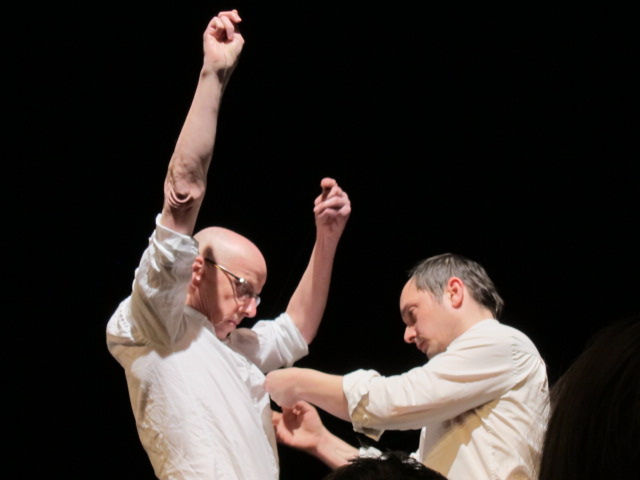
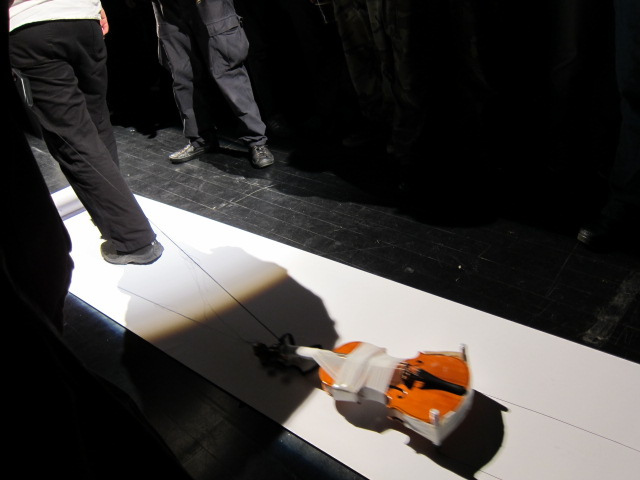
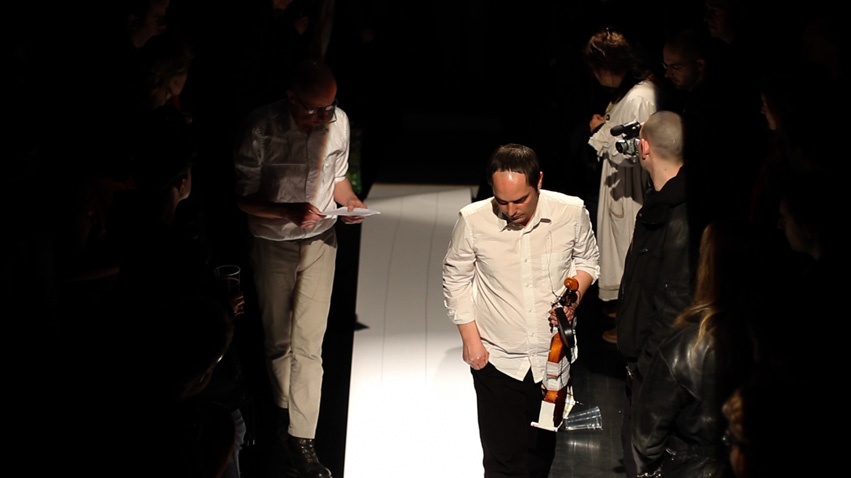
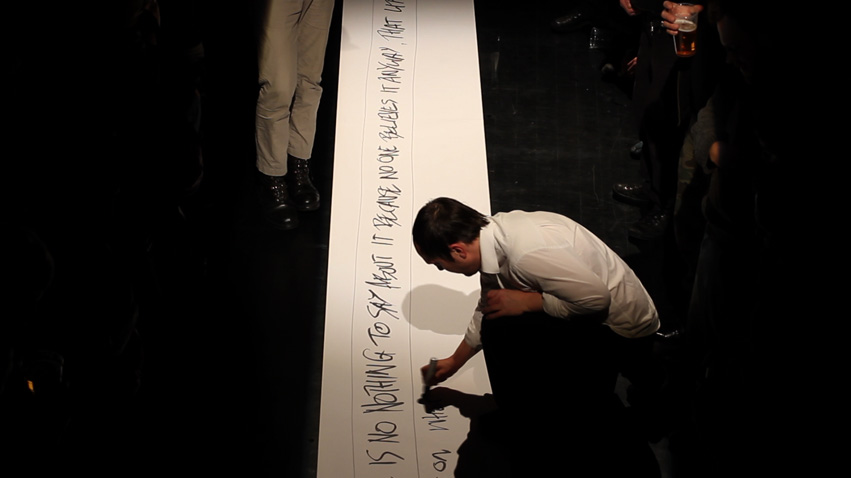
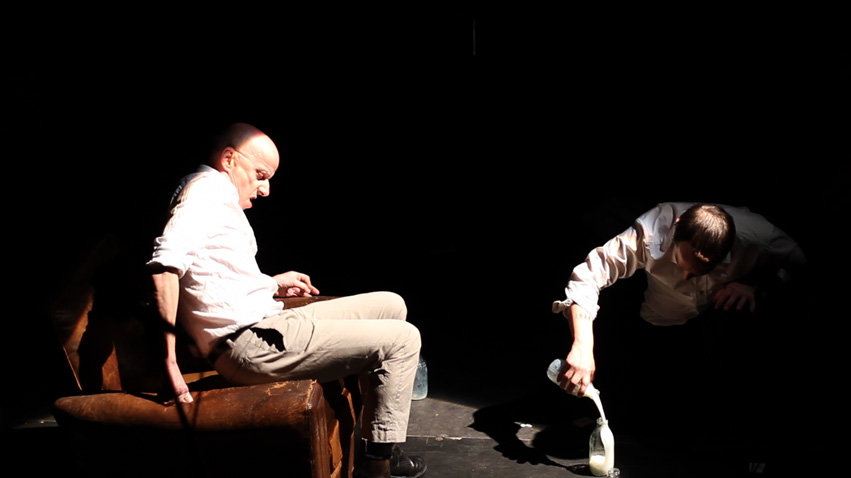
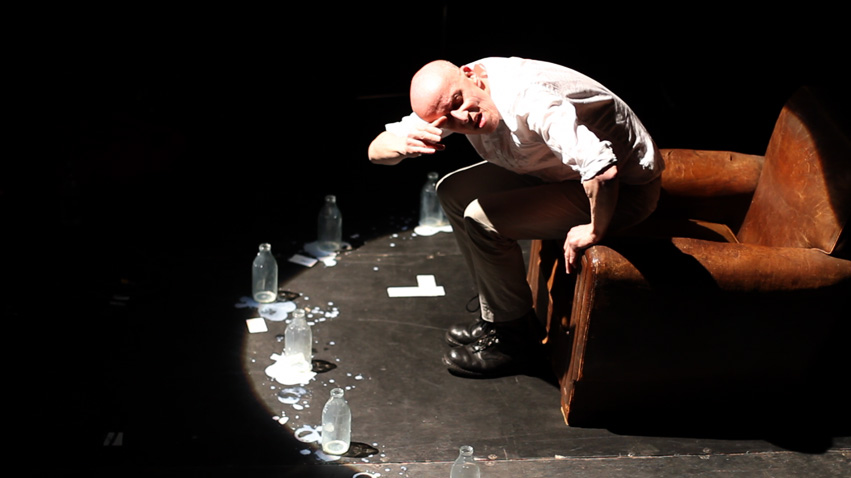
Photography © Zoe Valls / Yuko Anda